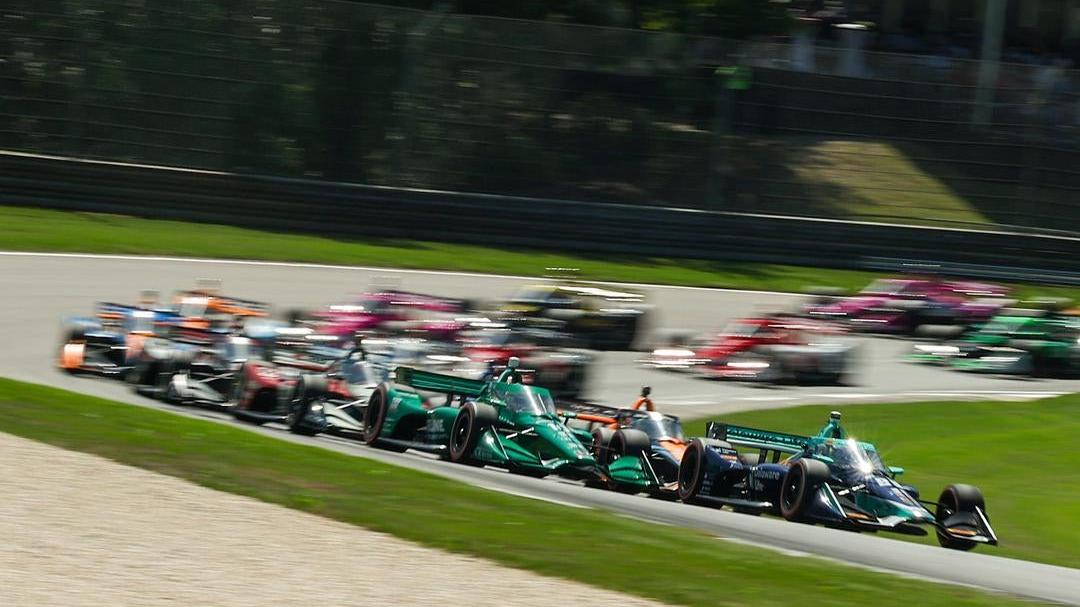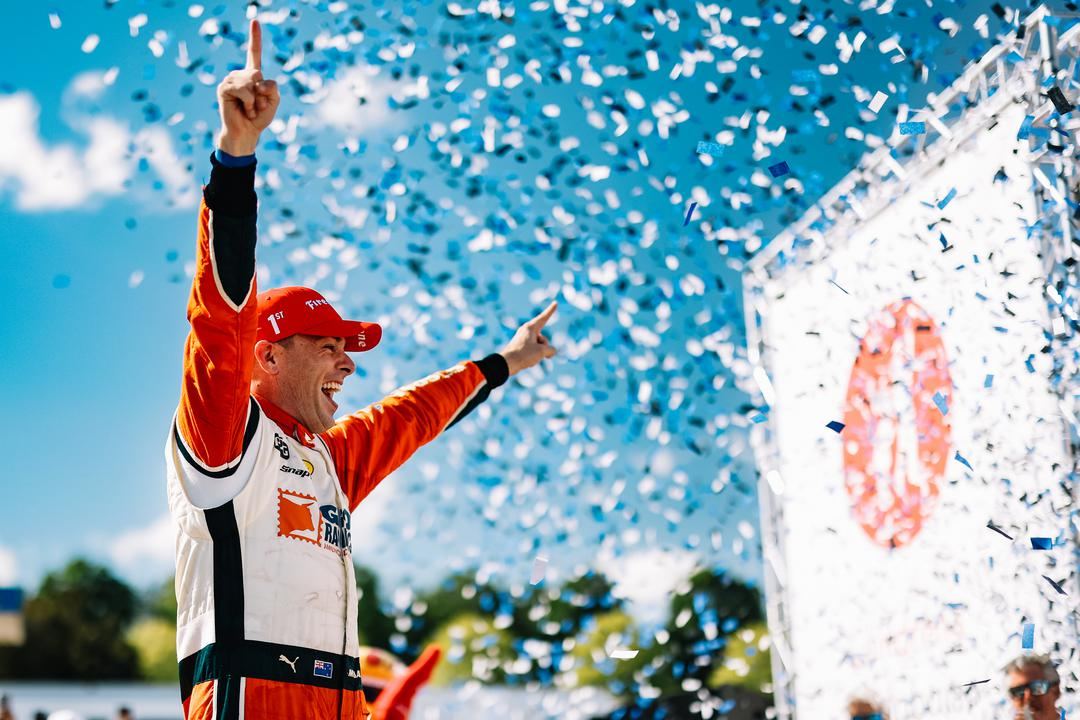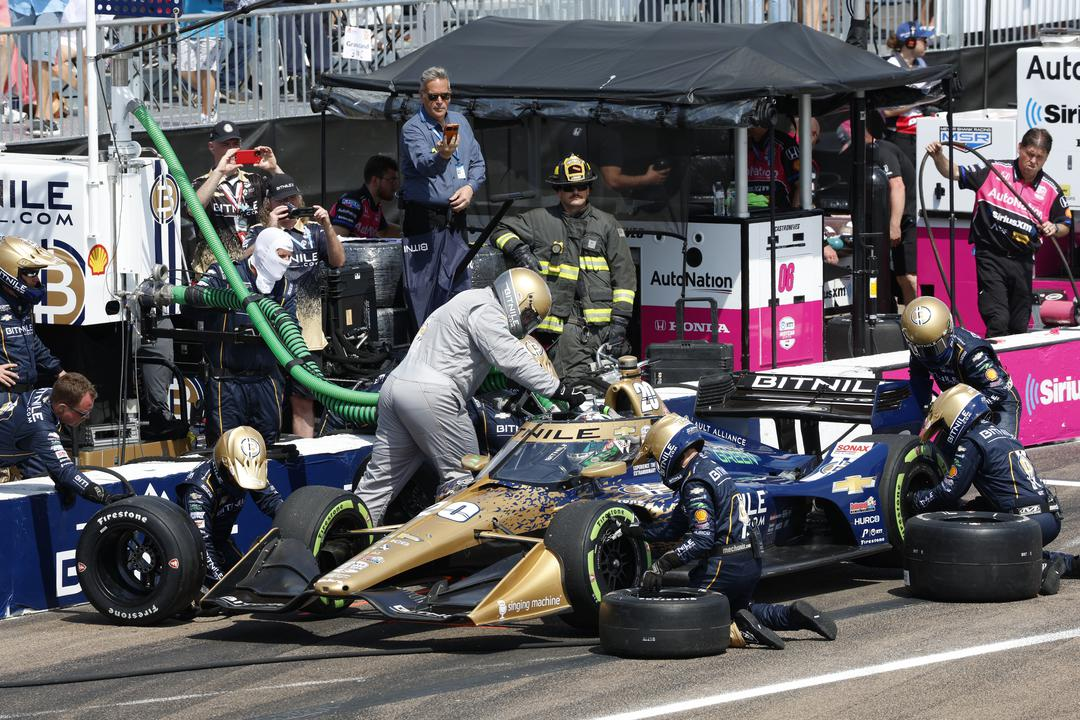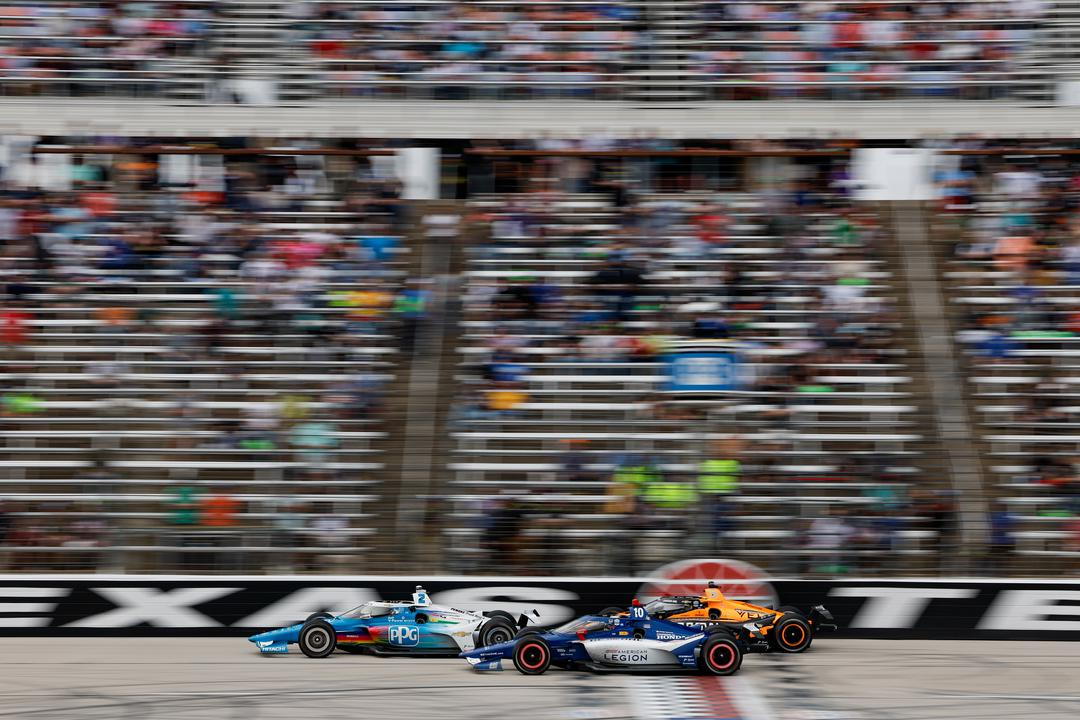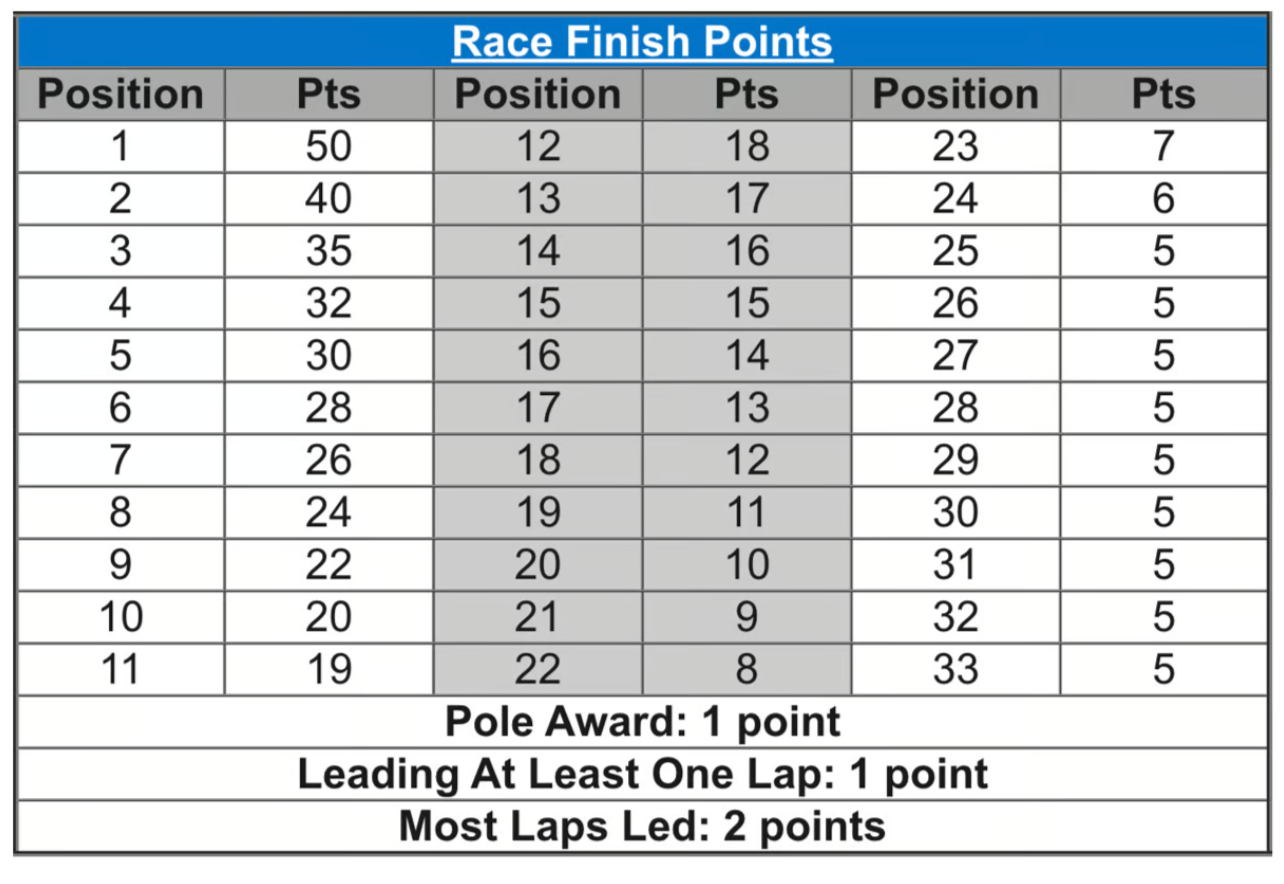A Formula 1 Fan's Guide To IndyCar
Are you an F1 fan looking to expand your horizons? Jalopnik has you covered.
The rising popularity of Formula 1 in the United States has garnered an unprecedented amount of interest in all forms of motorsport — but if you've made the transition from Netflix's Drive to Survive to live racing and are hunting for more, it can be a little intimidating to hop into a new series. So, if you've been looking to hop on the IndyCar train but only know about Formula 1, never fear: We at Jalopnik are here to give you the basic rundown of everything you need to know to tune into your first race.
What Is IndyCar?
At its most basic, IndyCar is America's premier form of open-wheel racing, which means you're watching cars of a (vaguely) similar style to those seen in Formula 1. It's also an incredibly historic form of motorsport; its name might have changed over the years, but some form of IndyCar racing has existed since 1905.
That being said, IndyCar's history can be pretty tough to unpack for new fans, which I'll delve into more below. You don't necessarily need to be an expert on the ins and outs of the sport's evolution, but it does help to know that its very contentious history has contributed to a lot of complex feelings amongst longtime fans, as well as a lot of the quirkier aspects of the series.
What Are IndyCar’s Similarities to Formula 1?
Visually, the cars used in IndyCar and F1 appear fairly similar: they're both open-wheel, single-seater machines that utilize (different) forms of head protection and rely on advanced aerodynamics and wide tires to make the most of their on-track performance. And the basic premise is also the same: drivers compete for one championship, while manufacturers compete for another championship. The similarities, though, just about end there.
How Is IndyCar Different to Formula 1?
Though the cars may look to be designed from a similar set of rules, IndyCar and F1 are two drastically different series. I'll talk about some of the nuance in greater detail further down here, but the primary difference between the two sports comes in their philosophies.
F1 prides itself on being the pinnacle of motorsport performance and technological development; it prioritizes innovation and advancement over everything else. The cars look incredibly sleek on track, but the teams that are able to afford a very high level of technical development have traditionally been the ones to gain a greater foothold. In most seasons, there are only a handful of drivers you can expect to compete for a win, where IndyCar's reliance on similar parts for all teams often opens up competition to a greater selection of drivers.
IndyCar's contentious history, meanwhile, has resulted in a totally different philosophy. Rather than asking teams to funnel ever-growing sums of money into developing different cars, IndyCar requires a more level playing field in hopes of increasing on-track competition. This largely comes down to the fact that American open-wheel racing has been subject to decades of infighting that hampered the growth of the sport.
Imagine that half of F1's teams decided they no longer wanted to be sanctioned by the FIA and defected to create their own, competing series; this has happened in IndyCar more than once. As a result, after the sport reunified in 2008, IndyCar essentially had to start from scratch to reassert its legitimacy for fans, drivers, teams, manufacturers, and venues. It's an uphill battle the sport is still fighting today.
These differing philosophies cannot be compared on an equal basis; F1 and IndyCar may both be open-wheel racing series, but they're aiming to tick a very different set of boxes. That being said, I've done a condensed comparison of both series' 2022 seasons side by side. This is not to argue that one is better than the other; instead, my intention is to show how these different philosophies play out over the course of a year:
-
In 2022, IndyCar's race schedule consisted of 17 events won by nine different drivers from four different teams. IndyCar's winningest driver was Josef Newgarden, who won five different races. Newgarden's teammate Will Power won the championship. Penske, the winningest team, won nine races. Five drivers contended for the championship at the end of the season.
-
In 2022, Formula 1's race schedule consisted of 22 events won by five different drivers from three different teams. F1's winningest driver was Max Verstappen, who won 15 races. Verstappen won the championship. Red Bull, the winningest team, won 17 races. Verstappen secured his championship win five races before the end of the season.
As you can see, the two different approaches to competition play out in two very different ways. F1's format has rewarded the prowess of one team as a result of that team's exceptional ability to interpret and apply technical regulations. IndyCar still rewards the most advanced team, but its efforts to level the playing field have enabled a greater element of unpredictability. What philosophy you decide is "better" entirely depends on what it is you value about motorsport.
Other distinctions between F1 and IndyCar include:
-
Speed differentials
-
Tire compounds
-
Points distribution
-
Team creation and formation
-
Pit stops: IndyCar features refueling pit stops while F1 does not
-
Head protection: IndyCar features the aeroscreen while F1 features a halo
-
Calendars: IndyCar primarily races in the U.S. and Canada while F1 is international. IndyCar's schedule is also much shorter
-
Liveries: IndyCar's liveries change very regularly, while F1 teams generally keep the same livery for a full season
-
Passing: IndyCar features Push to Pass, its version of F1's Drag Reduction System
-
Prizes: IndyCar is essentially a regional championship, while F1's international FIA status enables drivers and teams to compete for the World Championship
-
A Brief Introduction to IndyCar History
The history of American open-wheel racing is a complex topic that far extends the boundaries of this article, but I'll sum it up here to help you gain a little context for IndyCar.
American open-wheel's pinnacle event each year is the Indianapolis 500, an oval race that has been contested for over a century. It has been the focal point around which multiple different American championships have been founded. Everyone wants the Indy 500 to be part of their race calendar, but not everyone has always agreed on how to implement it — in large part because the Indy 500 is often perceived as standing a bit outside the bounds of any single championship, and because the owners of the Indianapolis Motor Speedway (where the race takes place) are generally able to exert a lot of sway over the rules.
Imagine the Monaco Grand Prix, as an event, was owned by one single family that had very specific ideas about how Formula 1, as a whole, should be run — ideas that often run counter to what the FIA wants the series to be. Now imagine that the owners of Monaco used F1's ability to run that race as a bargaining chip to influence things like the race calendar, stewarding standards, rules, and more. Imagine that some teams got tired of Monaco's ideas and decided to run form their own series, distinct from F1, which would retain the Monaco GP. That is, in many ways, what happened with American open-wheel racing.
For many years, American open-wheel was split into two ideological camps: one that wanted to preserve the heritage of oval racing and competition, and one that wanted to expand into other tracks while developing ever more powerful cars. Those mindsets led to a lot of butting heads and fracturing. As a result, Americans ended up with a lot of different championships that all stemmed from the same place, such as the Championship Auto Racing Teams (CART), the Indy Racing League (IRL), or Champ Car. If you've heard any of those names, then you've heard about the complex history of IndyCar's progenitors.
Rather than delve into too much nuance, I'm going to fast forward to 2008, when American open-wheel's rival factions once again joined forces to create what we now call IndyCar. It was a bit of a desperate move; both sides would have collapsed entirely had they not teamed up, but by that point, everyone was pretty disillusioned. Fans had left to watch other forms of racing, and teams, drivers, and manufacturers had grown frustrated with the eternally changing tides of the sport.
So, the IndyCar that you see today is very much a product of that chaos: It's been rebuilding its profile, but rather than being able to capitalize on decades of history, it has had to start over and begin reestablishing itself as a worthy sport, both for viewers and for any brands that might want to get involved. So, when critics of the series point out IndyCar's spec chassis, its regional nature, or its delays in technological advancement, it's important to remember that the sport hasn't had the same opportunities for linear growth that we can see in F1.
The Indy Cars
IndyCar is largely a spec series. That means that every single car shares a certain set of components with every other car, and that any manufacturers entering can provide other components for the teams it backs.
So, every single Indy car in 2023 will be built on the same base chassis from Dallara, and every team will use what's called a "universal aero kit," or a set of wings that will be used by every team. This is designed to help teams save money, since they don't have to source or develop different components. There are distinct aero kits provided for different tracks, as an oval requires different aero qualities than a road or street circuit. There are two engine providers, Honda and Chevrolet, who each provide engines to their respective teams.
Other specs for the 2023 Indy cars include:
-
2.2-liter V6 twin-turbocharged engines
-
550 to 760 horsepower, depending on the circuit
-
An additional 60 horsepower in the form of Push to Pass, a form of overtaking assist that can be used at any time by any driver, but for a limited amount of time each race
-
6-speed semi-automatic sequential gearbox with paddle shifters
-
Firestone tires (including new, sustainable tires made of guayule)
-
Renewable Shell fuel
-
Red Bull Technologies-designed cockpit protection in the form of an aeroscreen
-
1,650 to 1,690 pounds maximum, depending on the track
Formula 1's 2023 specifications can be found here for comparison.
The Teams and Drivers
In Formula 1, the organization of teams and drivers is fairly straightforward: there are 10 teams, and each team has two drivers that generally compete with said team for an entire season. Potential new teams need to petition the existing teams, F1, and the FIA to be able to join.
In IndyCar, there really aren't any rules on that front, which can make things tough for new viewers. In 2022, for example, 13 (0r 17, depending on how you count) teams competed, and 37 drivers competed at least one race in the season.
That's because IndyCar is far more flexible; while stability is always great, the sport also just wants as many teams and drivers to enter as possible to continue growing the sport. As a result, larger and more well-funded teams can run as many cars as they desire; for example, Andretti Autosport and Chip Ganassi Racing both ran five drivers in five cars at certain events. Other teams, like DragonSpeed/Cusick, only entered one race.
There are a lot of reasons for all this diversity. Because IndyCar's schedule features a blend of ovals, road courses, and street circuits, some teams will hire drivers to contest specific circuits. Ed Carpenter, for example, only competes on ovals. Callum Ilott, meanwhile, only contested road courses and street circuits in 2022. Other teams, like Paretta Autosport, selected a handful of select events to contest in order to continue building the team's profile.
And the Indy 500 always serves as an outlier event. The race traditionally sees 33 cars take the green flag, so many teams will add one or two additional cars for that race in hopes of bettering their odds of winning. Other teams prepare a car to specifically run for the 500.
Plus, IndyCar teams often change their liveries, making it challenging to tune into a race and keep all its entrants straight.
The best way to learn about the current field is to explore the driver pages on IndyCar's website.
The Championship Format
IndyCar's championship format is hugely different than the one you'll find in F1. Many European series sanctioned by the FIA will share the same points-giving format — but IndyCar doesn't follow that format. It has its own.
The biggest difference here is that every driver scores points based on their classified finishing position. You can finish dead last in the Indy 500 and still count five points toward your overall season total. You can also rack up additional points for scoring pole position, leading at least one lap, and leading the most laps of anyone. This often keeps championship battles close, leading to multi-driver battles for the win at the end of the year.
We've included the breakdown of points below, but you can learn more about the nuance of championship points for both competitors and manufacturers on IndyCar's website.
Street Circuits, Road Courses, and Ovals
Each IndyCar season is composed of a diverse blend of street circuits, road courses, and oval tracks, which enables drivers and teams to test their merit on a wide array of distinct circuit styles that each require a unique set of skills. American motorsport has a long history of oval-track competition, which is distinct from the more European-style emphasis on natural-terrain road courses or city streets.
You can check out the full IndyCar schedule here. In 2023, there will be five street circuit races, five oval races, and seven road course races — a ratio that remains pretty similar from one season to the next.
How Do I Watch a Race?
If you live in America, you can watch every IndyCar race live on NBC, USA, or streaming service Peacock; the IndyCar schedule page on its website features viewing information for Americans each race. If you live abroad, you can check out IndyCar's website for more viewing info.
Where Can I Learn More About IndyCar?
We've only just scratched the surface of what IndyCar holds with this story, but as you might have gathered, IndyCar is full of rich history, great stories, and goofy personalities. We can, at the very least, direct you where you need to go for more!
To learn about the drivers:
-
Bus Bros, a YouTube video series by teammates Josef Newgarden and Scott McLaughlin
-
100 Days to Indy, a Drive to Survive-esque docuseries from The CW and Vice about IndyCar
-
Off Track with Hinch and Rossi, a podcast featuring racer Alexander Rossi and NBC commentator James Hinchcliffe
-
Speed Street, a podcast featuring racer Conor Daly, which also includes great candid interviews with current IndyCar drivers
To catch up on races:
-
Peacock
-
IndyCar's YouTube page, which features dedicated playlists for all races
